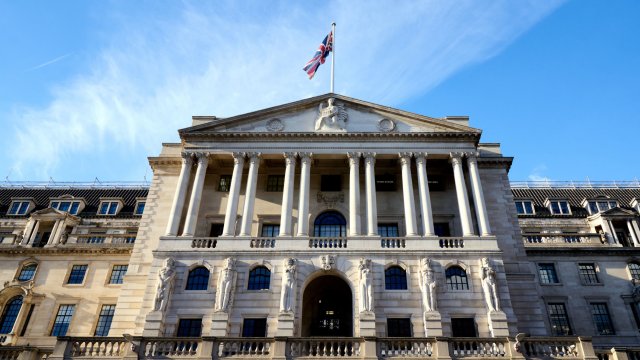
The Bank of England said on Thursday that inflation will fall to 5.1 per cent by the end of this year, a fall of 5 per cent, however this will still mean the UK’s rate is much higher than that of the US and Europe.
It currently sits at 10.1 per cent, despite previous predictions that it would fall to under double digits earlier this year, and comes as the Bank of England increased the base rate today to 4.5 per cent, in a bid to calm rising inflation.
While US inflation is still high, it fell to 4.9 per cent on Thursday while the eurozone’s is currently at 7 per cent – still 5.2 and 3.1 per cent lower than the UK’s, respectively.
So why is ours so much higher? Experts say it is due to three key factors.
Mohamed El-Erian, chief economic adviser at Allianz and former IMF deputy director, told BBC’s Today programme it came down to a lack of productivity, a less flexible labour market and the UK’s changing international relationships after Brexit.
He said: “These are things the Bank of England cannot do and it needs a lot more help from other Government agencies in order to make its job easier.”
Productivity is a major issue for the UK. Our long standing problems with this mean that our output is less than the French and Germans – the output is measured by taking the hours we work and dividing them by the gross domestic product.
It is estimated there are 330,000 fewer workers in the UK as a result of Brexit. Sectors such as transport, hospitality and retail have been particularly hard hit.
Jonathan Haskel, an external member of the Bank’s Monetary Policy Committee, said earlier this year that a wave of investment was “stopped in its tracks” in 2016 following the Brexit vote. He said the UK had “suffered much more” of a productivity slowdown than other large economies because of it.
Earlier this year, the Bank of England forecast a weak outlook for productivity in Britain, with growth in output per hour worked averaging 0.25 per cent a year over the next three years, down from 0.75 per cent between 2010 and 2019 and two per cent in the decade before the 2008 financial crisis.
This is thanks to a growing number of people opting to study rather work alongside older people opting to retire sooner.
The price of energy has been a major contributor to rising energy prices across the world. However, the UK has felt this more acutely as it is a bigger user of gas to heat homes compared to other European countries.
The change to Ofgem’s price cap being reviewed every six months to every three months should have a positive effect on upcoming UK inflation figures as it means the impact of fuel price rises or falls on inflation will be less delayed by that lag.
Neither the EU or the US have such a delay so it effects the inflation figure sooner, as such April’s inflation figure is predicted to be closer to Europe’s.
US inflation is also lower because it has its own fuel supplies so doesn’t need to rely on other sources, the price of which has been pushed up dramatically since the war in Ukraine.
The mini-Budget also had been said to play a part, with Liz Truss’ proposed policies tanking the value of the pound for several months.
Danni Hewson, head of financial analysis at AJ Bell, added: “The US imports far less than the UK, including energy, plus the Fed went harder on rate hikes than the Bank of England even though it started the cycle earlier, so the effects are already being felt in the economy.
“Some parts of Europe have experienced a similar inflationary trajectory as the UK, particularly when it comes to food costs, but a warmer than expected winter has helped considerably and that free movement of goods can’t be ignored when it comes to prices.”
What will happen to inflation going forwards?
Previously, the Bank predicted inflation would be at 4 per cent by the end of this year, but this has now been increased to 5 per cent as a result of food and clothes prices increasing more than expected.
Rishi Sunak pledged to halve inflation in January, when rates were still at 10.1 per cent, and there is now a 50-50 chance he will make it. If it is met, it will be by a whisker, however.
Things can change quickly as just three months ago, it was expected that inflation would be 1 per cent at the beginning of next year but this has now been re-evaluated to reach 3 to 4 per cent by June 2024. It is expected to fall below double digits next month.
As a result, the economy is now not only forecast to avoid a recession but to not see any fall in growth at all. While it may not be a ‘strong’ economy, it is better than previously forecast.
The Bank said it continues to “monitor closely indications of persistent inflationary pressures” adding it will adjust the base rate as necessary to return inflation to the two per cent target sustainably in the medium term, in line with its remit.






